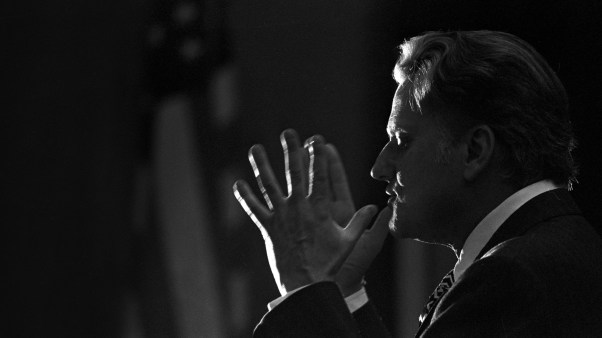This article is excerpted from the Building Church Leaders download Building Visual Media into Your Ministry.
We are entering the third age of communication, according to Andy Crouch, culture guru and director of Christianity Today International’s Christian Vision Project. The first age was oral communication, when history and theology were captured in stories and shared around campfires and tables. The second age was written communication, when the stories were committed to papyrus and sheepskin and paper and finally mass-produced. Now comes the third age. “Just as the shift to writing required the skills we call literacy, so visual culture requires its own skills—for lack of a better word, visualcy,” Crouch said.
A 2007 Leadership journal survey of preachers shows the visual revolution is well underway. Leadership surveyed 515 subscribers who, as lead pastors, preach regularly. Most have entered the visual fray—some signed on willingly, others feel conscripted—but almost all have felt the ground shift beneath their pulpits as technologies, audience expectations, and Game Boy learning styles make new demands on churches.
Here’s how:
- Some 73 percent of churches regularly use some kind of visual enhancement;
- More than half of pastors (58 percent) report their use of PowerPoint has increased in the past three years;
- 50 percent are using more multimedia clips from movies, TV, or other outside sources;
- About one-third of churches are using more personal testimonies (36 percent), videos made by their staff or members (34 percent), and props (34 percent);
- And one-fourth (24 percent) are using more artwork.
The Technology Factor
Technology is increasing, and not only in contemporary services: 75 percent of all churches use video projection at least once a month; 68 percent use video projection every week.
As might be expected, smaller churches and liturgical churches are less likely to use video and lighting technologies: Some 48 percent of churches under 100 attenders use none of the technologies on Leadership’s list, compared to 11 percent of churches over 500. And 56 percent of liturgical churches use no video and lighting technologies, compared to 15 percent of contemporary churches.
But the gaps are not as great as they once were. Half of the smallest churches are using more technology now than they did three years ago. And while half of contemporary/blended services use more visual elements now than three years ago, one-third of liturgical/traditional services also reported increases. Even the churches whose heritage, facilities, and budgets hamper use of technology are finding work-arounds.
Among all churches, the most common uses for visual elements are still functional rather than artistic: song lyrics (92 percent), announcements, sermon points, and Scripture readings (75 percent). But increasingly pastors are including visual elements in their services and sermons that communicate more than simple words on screen: photographic images (70 percent), movie and TV clips related to the service (53 percent), video segments produced in-house (43 percent), and artistic images (34 percent).
Whose Job Is It?
The shift from functional use of video to artistic (and therefore theological) use is under way. But who produces the visual elements for worship? 40 percent of pastors say the job falls to them.
On average, in churches of all sizes, 39 percent of pastors produce the visuals used in their sermons, 38 percent collaborate in their creation, and 23 percent delegate the job to someone else. In general, the smaller the church, the more likely the pastor is to produce all the visuals.
In 72 percent of the reporting congregations, worship technologies are operated by volunteers. Among churches with more than 500 in attendance, one-half have paid A/V staff. In some congregations, a new position called “worship producer” is emerging, as image-heavy worship services need support similar to the behind-the-scenes staffing of television shows.
The implication for pastors in churches of all sizes is this: If you aren’t involved in the development of your church’s multimedia, you should be. Eager, often young, media whizzes have the skills, but they need guidance. Without it, your pastor’s (or your own) sermon may be at odds with its purported visual support, and your worship service will be sending mixed messages.
Must Eye? One of the panelists at a recent media conference was a young filmmaker, a prodigious college senior who was editing his final film project before graduating. He served as a good counterbalance in a room of gung-ho multi-media pastors and doubtful one-medium preachers. “Don’t add video to your sermons just to impress my generation,” he warned. “We’ve seen it all, and we’ve seen better than you can produce.”
That was sound advice, especially for pastors concerned about the cool factor, connecting with culturally aware listeners, and their own comfort level.
Excerpted from our sister publication, Leadership journal.
Copyright © 2007 Christianity Today. For more articles like this, visit www.leadershipjournal.net.








